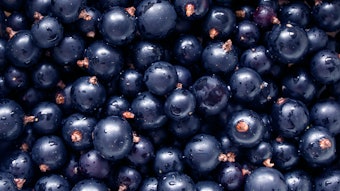The carob bean, commonly known as locust bean and St. John's Bread, is the dried fruit of Ceratonia siliqua, a leguminous tree native to eastern Mediterranean countries and commercially cultivated throughout most of the Mediterranean region in countries such as Spain, Greece, Cyprus, Turkey, Italy and Portugal, and in the Arabian peninsula. As harvested, the mature bean is a dark brown pod averaging 4-12 inches long and 0.25-0.75 inches thick; it contains 5-16 brown bony seeds, Since ancient times, the carob tree bas seen a number of versatile uses, including nourishing beverages for human consumption, a liquor and coffee substitute (carob coffee), and medicines such as laxatives and diuretics. However, its major use was and still is as animal feed, because the deseeded pulp of the carob bean (up to 90% of fruit dry weight) has limited nutritional use due to its low protein content and the presence of highIy condensed polyphenols.
Sophisticated technologies in the food/fllavor industry have spawned recent discoveries and new uses for carob in the modern market. The dried and powdered endosperm of the seeds is used for tbe manufacture of locust bean gum and is employed, primarily in the food industry, as an emulsifier/stabilizer in products such as ice cream, cheese, salad dressings and doughs.
The carob pulp composition is well documented, although variations have been observed according to varieties and cultivars. The pulp is rich in sugar (40-50% of the dry matter), low in protein (2.7-3% of the dry matter) and lipids (0.4-0.8% of the dry matter), and high in phenolic compounds (mostly, highly condensed tannins) that account for nearly 20% of the dry matter. The high, easily extractable sugar content of the pulp makes this material suitable for syrup production, with “carob sugar” manufactured at the industrial level in Portugal. Fermentation studies have also investigated its use as a suitable substrate for manufacture of ethanol and single cell protein.










